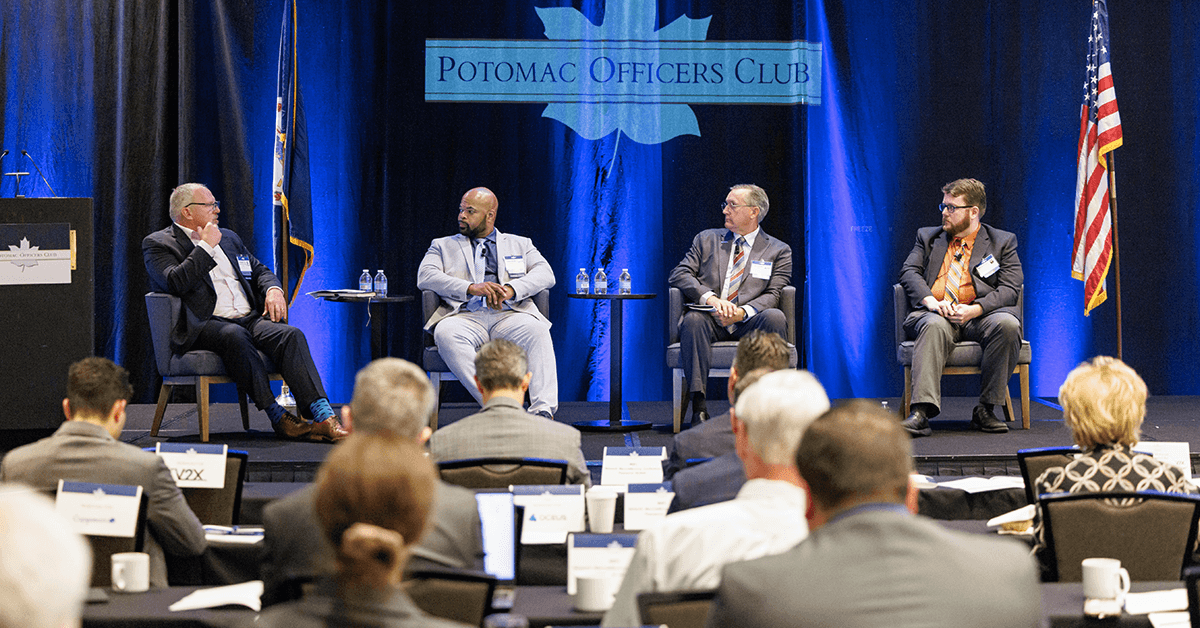Communications technology advancements are driving forward important innovations and improvements for 5G. But what’s in store for the next generation of 5G connectivity and communications in the defense sector? Panelists at the Potomac Officers Club’s 5G Forum shared their insights last month.

Hear more industry-leading insights at Potomac Officers Club events. The next event is the 2024 Air Force Summit on July 23, and speakers like Air Force CIO Venice Goodwine and Under Secretary Melissa Dalton are confirmed to headline. Join the 2024 Air Force Summit to be a part of the conversation.
According to Michael Piesen, deputy acquisition manager for 5G technology for the U.S. Army Combat Capabilities Development Command’s C5ISR Center, 5G can “really shine” in mission partner environments and coalition networks.
Piesen explained that when working with two different organizations — whether military and civil service, joint service or foreign partners — communications generally “default to the lowest common denominator radio,” which is not always the most effective or the most technologically updated system. But this is where 5G can come into play and unlock more seamless collaboration, said Piesen.
“5G could be basically a new baseline,” Piesen explained during a panel discussion moderated by Christopher Yaw of Ericsson Federal Technology Group. “If [we] and our partners share a standard 5G deployment, that simplifies a lot of other steps. That right now is done in a fairly generalized manner, probably going back to some of the older systems.”

For Joe Pishock, leader of Oceus’ DOD accounts and strategy, the next meaningful 5G development will be tapping into spectrum advancements. 5G operates across a spectrum of radio frequency bands: low, mid and high. Each band has different capabilities and can support a range of different systems and functions.
“I think in the next five years, we’re going to figure out how to do spectrum,” said Pishock, “and it’s not going to be the magic spectrum that works everywhere all the time. We’re going to handle the cellular spectrum the same way that we figured out satellite spectrum when we went to commercial terminals.”
But while next-generation advancements and technological innovations are incredibly important to the future of 5G, there are still problems that need to be solved today, and warfighters may not be able to wait until the next big improvement comes along.
“The best form factor is whatever I can get my hands on today,” said Pishock. “This is the challenge that we face. The program guys have to make one big decision every 10 years, but it’s a billions-of-dollars decision, and it better be right because you committed such a high level of national resources. Now we’re in the IT world, so that model is really contentious because we don’t have 10 years to wait for that big thing.”
Pishock shared that technology should be introduced and iterated at the unit level so that warfighters can actually get their hands on it and their feedback can start to be incorporated into improving that technology.
As far as the challenges facing the 5G industry, Leland Brown, federal director and principal engineer for military and aerospace advanced communications at Capgemini, said the biggest hurdle he sees is being able to scale 5G.
“The reality is as we try to take this to a point where you’re taking a system designed to be static and make it mobile, it causes a lot of issues,” Brown explained.
















